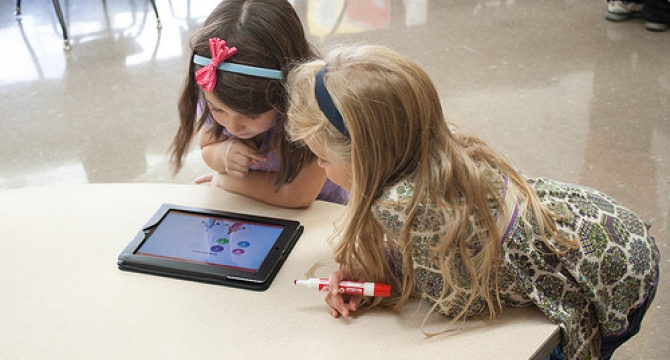Innovation is the Beautiful Chaos that 28 Young Learners Create
Our challenge lies in how best to capture, synthesize and share the magic of learning that happens in authentic contexts.
“When we are no longer to change a situation; we are challenged to change ourselves.” Victor Frankl
Imagine the beautiful chaos that a class full of 4- and 5-year-old learners can create as they hypothesize, inquire and explore their way through a full day of learning. In early October, I was talking about that very thing with the teacher and early childhood educator from one of our Full Day Kindergarten teams. They articulated the challenges of capturing this learning and expressed how the tools that they had believed they would be using in their classrooms were not quite up to the task. Together we wondered how to document, share and connect this rich, varied and deep learning?
That’s the thing about learning when it happens in an authentic context that is driven by the learner; it’s difficult to capture, synthesize and share the magic – so difficult that we tend to manage the chaos by regulating the learning and confining it to tasks and tools that are easier for us to control and measure. It’s not done with malice; after all, how many of us were trained to lead classrooms where individual learners are asking their own questions and engaging in their own inquiries? Or, how many schools or systems are designed to provide the resources and support for teachers use their own questions to guide their professional inquiries?
That’s the thing about learning when it happens in an authentic context that is driven by the learner; it’s difficult to capture, synthesize and share the magic – so difficult that we tend to manage the chaos by regulating the learning and confining it to tasks and tools that are easier for us to control and measure.
Innovation involves assessing the current reality and changing aspects of that reality so improvement and efficiency can occur. That is why, for me, innovation in education is so important. Our children are challenging us to think and act differently about learning; the ways we design learning spaces, the tools we use and how we mobilize our professional knowledge. They are inviting us to join them and shift our beliefs on how we plan for learning, how we document learning and how we connect this learning with the world of ‘school’ and beyond.
Let’s return to the classroom. The beautiful chaos of our 28 young learners has opened an inquiry for the two young educators who posed the problem of practice back in the fall. They are exploring the ways they can use iPads to document the learning process in the classroom; through video, photos and audio they share this learning with each other, the students and their families. They are watching more and talking less, asking more questions and giving fewer directions; there is less whole group teaching time on the carpet and more small-group and one-on-one instruction at the learning centres – still beautiful, but with less chaos.

CC photo courtesy of: MikeOliveri
Public schools must be places of inclusion where each child’s talents and assets are known and acted upon and where the questions of the learner are the starting point for inquiry. These are ideas that challenge each of us involved in public education to change and innovate. It is the most important work we need to do and many of us have already begun – have you?
